How Jupiter once lived: Celebration marks DuBois Pioneer House's 125th anniversary
JUPITER — Long before “location, location, location” became a real estate mantra, Jupiter pioneers Harry DuBois and his wife Susan Sanders DuBois built their 1898 house on high ground overlooking the Jupiter Inlet.
The decision proved to be wise, as this year marks the DuBois Pioneer Home’s 125th anniversary, which the site's curators will mark with a celebration Tuesday. Located at 19075 DuBois Road in Palm Beach County’s DuBois Park, it has withstood hurricanes and escaped fates such as fires, termites or development that could have ended its reign as one of the oldest houses in Palm Beach County.
The house, an example of Victorian shingle architecture, is still in its original location atop what has been known for decades as a shell midden. But a dig at the site in 2011 determined that the 20-foot midden is actually a purposely built mound constructed 5,000 to 6,000 years ago by Native Americans, making it even more important to the area’s history and archaeological world.
“Mounds are purposely built and usually ceremonial or status-related. Middens are where people have piled up debris, and it has increased in height. Nobody gets excited about a midden. The field of archaeology has matured and grown,” said Chris Davenport, an archaeologist and Palm Beach County’s historic preservation officer.
Harry DuBois built 'house on a hill' as a wedding present to Susan
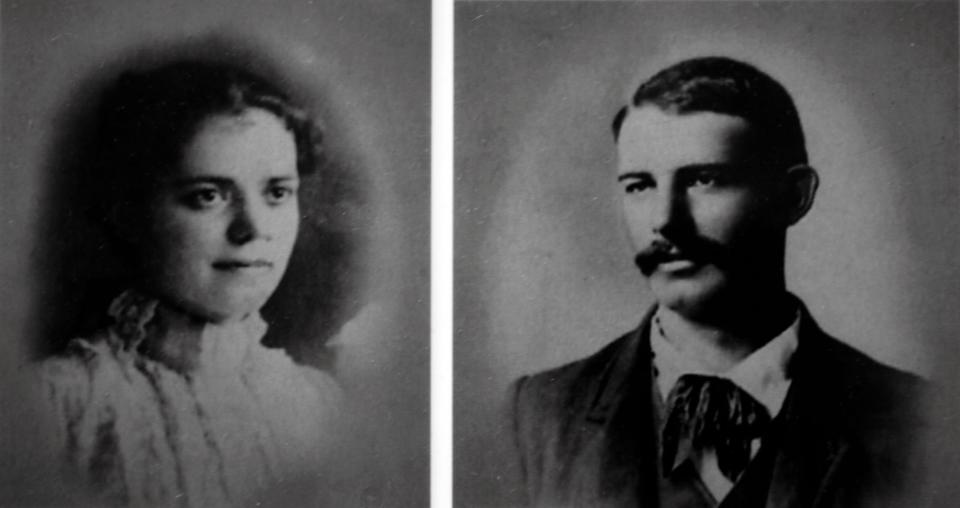
Susan DuBois, a schoolteacher from Kansas, was settling in an unspoiled wilderness and wanted to be able to enjoy the ocean breezes and view and see who was approaching by land or sea. She became skilled at shooting rattlesnakes directly from the house’s screenless windows.
Harry met Susan on a blind date at the Jupiter Inlet Lighthouse, built in 1860, and would later propose to her there.
“He built the house essentially as a wedding present,” said Josh Liller, the Jupiter Inlet Lighthouse and Museum’s historian and collections manager.
How Jupiter is growing: Suni Sands' future in mediation; talks to continue through Dec. 31
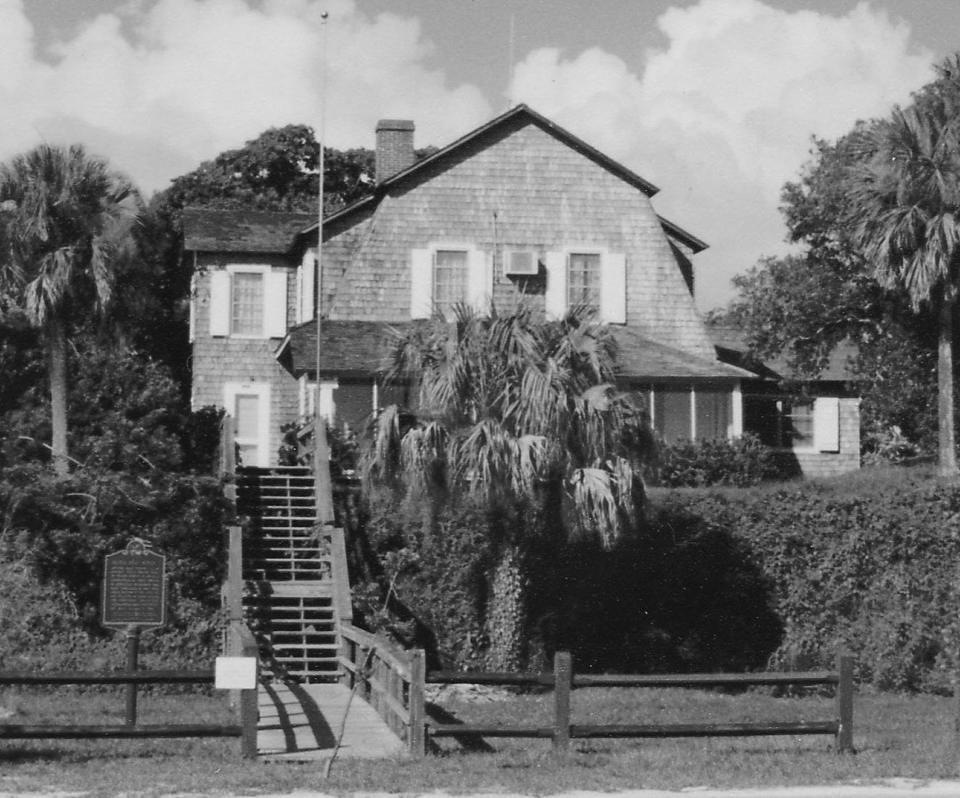
The “house on the hill” is also rare because it’s a New Jersey-style cottage, Liller said. Most of the early Florida houses were cracker-style, plain wood frame houses characterized by straight hallways from front to back.
DuBois came to Florida from Monmouth County, New Jersey, about 50 miles south of New York City. He had his parents send plans for a house like those along the Jersey Shore.
The DuBoises raised their four children — John, Henry, Anna and Neil — at the homestead. It was originally two rooms with a separate kitchen out back.
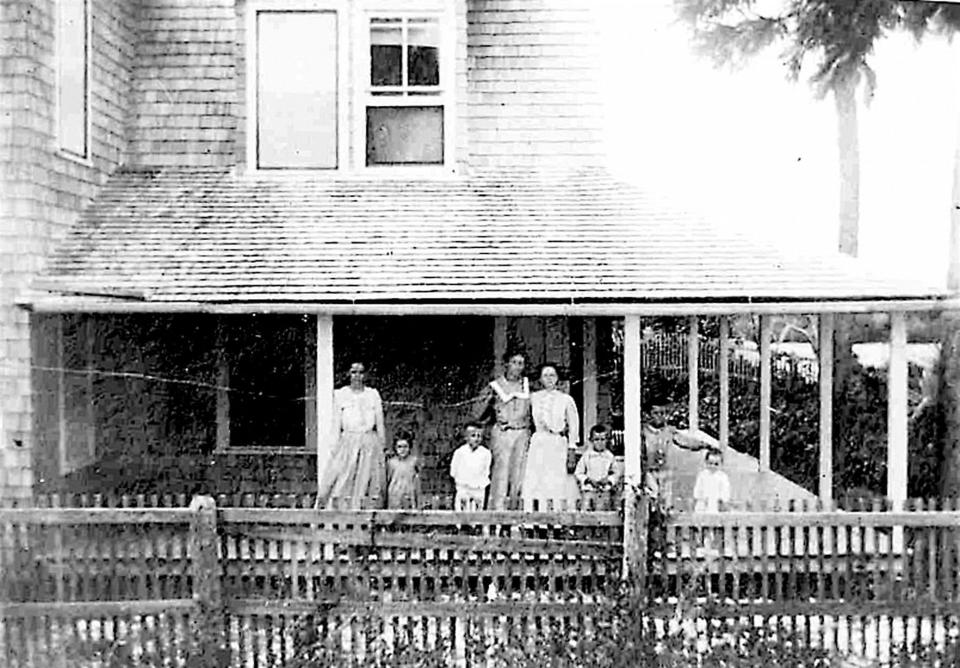
How has the Dubois Pioneer Home survived rot, termites? It's in the pine
The DuBois family owned the house and mound until 1971, when Palm Beach County purchased it. The homestead and the Jupiter Inlet Mound are jointly listed on the National Register of Historic Places as "Jupiter Inlet Historic and Archaeological Site."
The DuBois Pioneer Home’s survival can be mostly attributed to the rot-and-termite resistant Dade County pine used in its construction, and to the way the house was built, Davenport said.
“Once the Dade County pine hardens, the only thing that destroys it is fire,” Davenport said. “The older houses, especially with DuBois, were built differently. They were not built like today’s houses. During Hurricane Wilma, DuBois had extensive damage. It blew off all the shakes. But the wind goes in and goes out. It goes through it.”
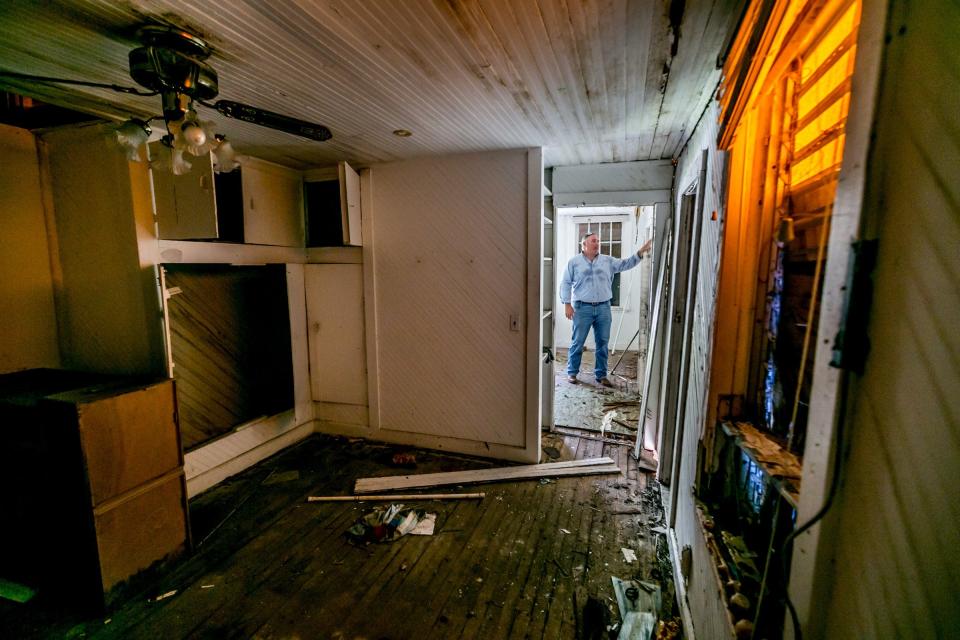
Starting in 2008, the house was closed as it underwent a $600,000 renovation that included a new roof, an upgraded front porch, new floors of Dade County pine salvaged from a bank in Connecticut, replacement walls and ceilings, a renovated bathroom and a paint job using colors original to the home. It reopened in 2016.
During that renovation, in 2011 a trench was dug for an electrical cable. As archaeologists using mesh screens sifted through the mound’s top foot-deep layer bucket load by bucket load, they spotted something.
Four Venetian faceted glass beads, made in Italy in the 1500s, were unearthed.
“They were really small, smaller than a pea. They screen everything. They got hung up on the screen, and they are red, white and blue. They stood out,” Davenport said. “They were brought over by the earliest explorers.”
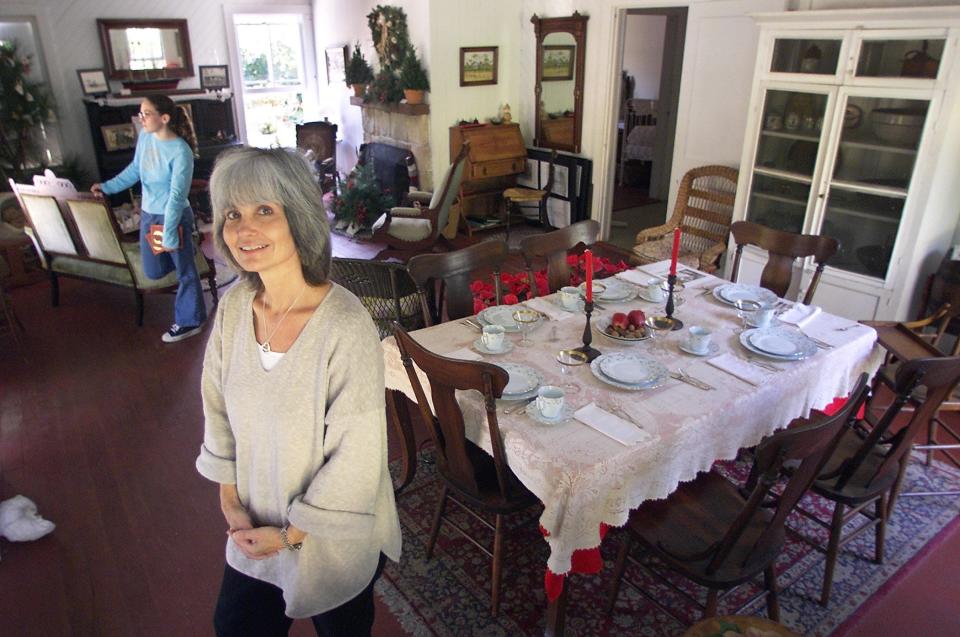
It was an exciting find, said Davenport. The beads, known as chevron beads, are not on public display, although there is a photo of them at the pioneer home. The beads are under lock elsewhere in the county. There are perhaps 11 or 12 of the rare beads discovered in the New World. Most were found in St. Augustine. Other less rare beads were found at the site as well.
The explorers, including Ponce de Leon, carried beads to trade with friendly Native Americans in hopes of obtaining fresh water, deer meat or other items. Some could have been salvaged from shipwrecks.
“South Florida is the last black hole of American archaeology, outside of Alaska. There has been so little work down here. Every single time we go out in the field, there is a better-than-average chance that we find something that rewrites our understanding,” Davenport said.
New exhibits coming to DuBois Pioneer House in next few years
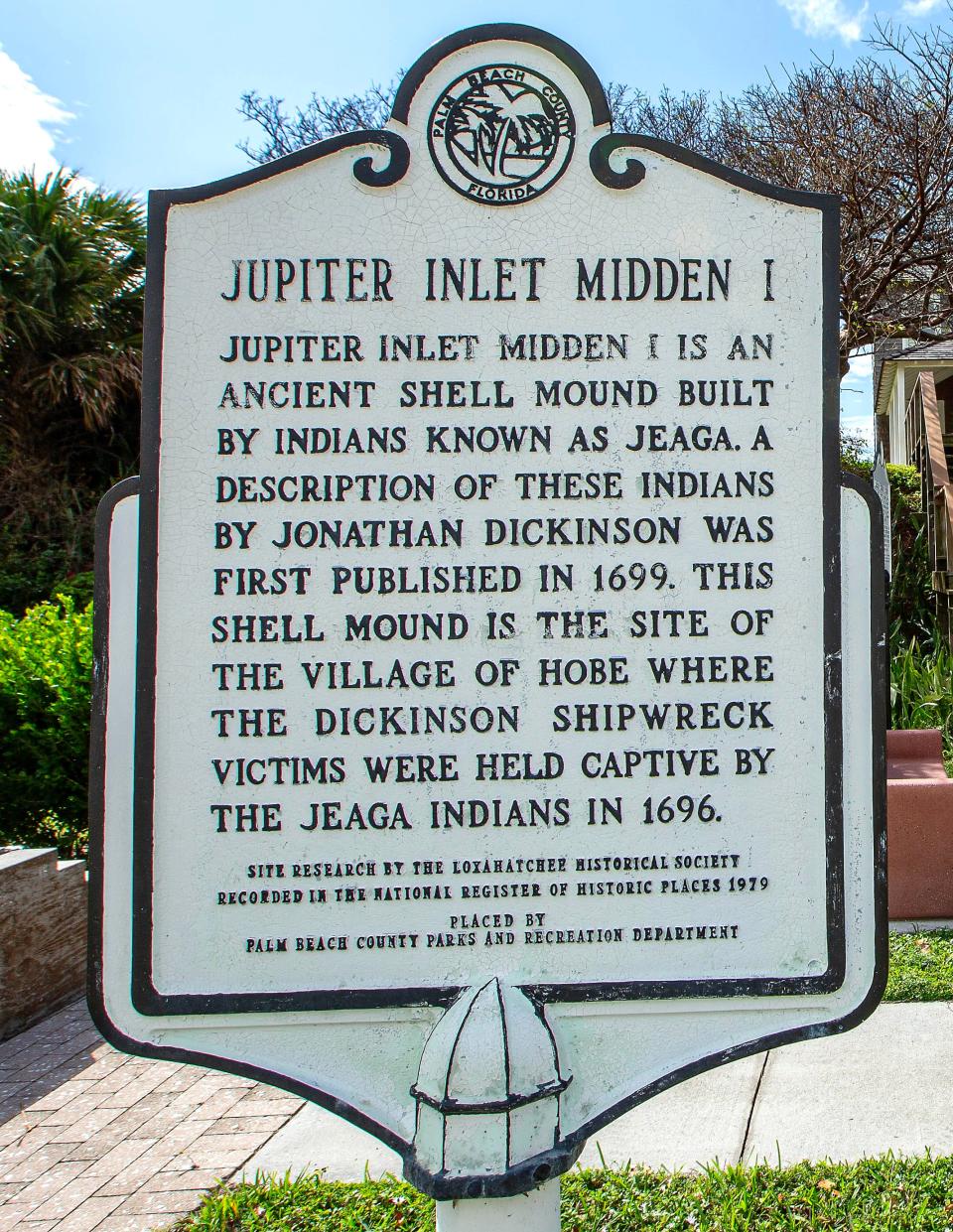
Diana Hutchison, a recreation specialist with the Palm Beach County Parks and Recreation Department who manages the pioneer home, said that within the next year or two, signs will be changed and exhibits added to reflect the site’s status as a mound and its history with Indigenous people. Updated brochures are also being printed. A structural restoration of the second floor, added in 1903, and exterior repairs are also in the works.
“This is the only shell mound in coastal Palm Beach County that is still in existence,” said Hutchison, who is an archaeologist. “It is one-third of its original size. They used the shell to make roads.”
A smaller building on the property, known as the Pineapple House, was recently restored, and that space will be filled with exhibits and signs, and a mural about the Jeaga people and archaeology, Hutchison said.
Older than the pioneer home by at least several years, the Pineapple House stood near present-day U.S. 1, where Harry DuBois grew pineapples. The shed was used to store the harvested pineapples. DuBois floated the Pineapple House up the river to what is now DuBois Park and lived in it while the home was being built.
The Spanish called the native Floridians who once lived in northern Palm Beach County “Jobe” and “Jeaga,” and the Jeaga built the mound at what is now DuBois Park, according to the Historical Society of Palm Beach County. It has been said for years that the Jeaga died out after becoming infected with European diseases.
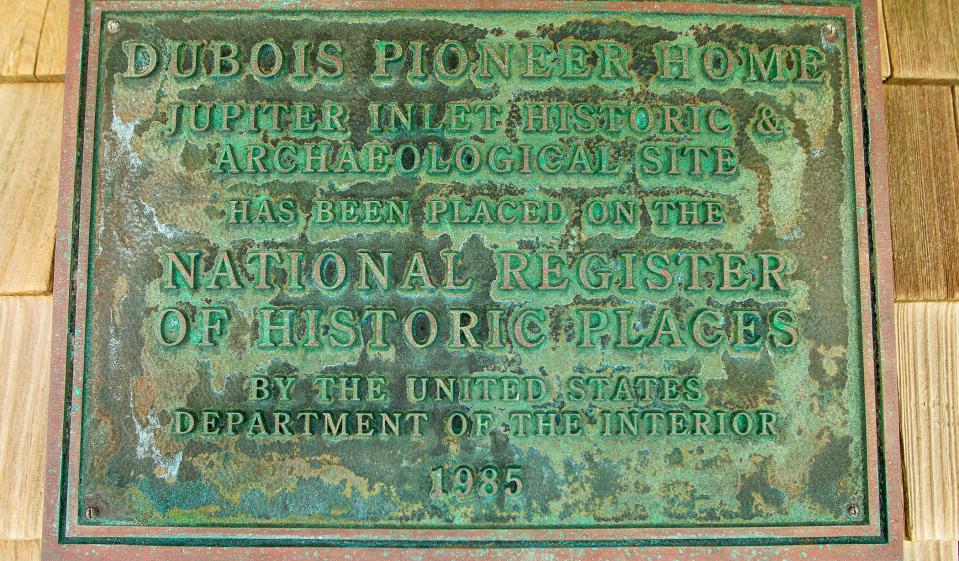
However, Davenport said the more recent view is that the Jeaga did not completely die out, and that some went to St. Augustine and then to Cuba to escape becoming slaves.
The house, open for docent-led tours to the public Tuesday through Thursday from 10 a.m. to 1 p.m., gives visitors a glimpse of how the pioneers lived.
DuBois raised pineapples, then bananas on land near Pioneer House as wife shot rattlesnakes with rifle
When the DuBoises and other pioneers first arrived, there were no stores. They survived by growing their own fruits and vegetables, hunting game and fishing. Goods they couldn’t produce themselves were brought in by train.
DuBois, who had visited Florida with his parents as a teenager, came to the Titusville area to pick oranges. He was hired to work at the lifesaving station at what is now Carlin Park.
“It was a rescue station, a forerunner of the (U.S.) Coast Guard,” Liller said. “They patrolled the beach looking for ships in distress. A lot of their work involved ships trying to get through the Jupiter Inlet.
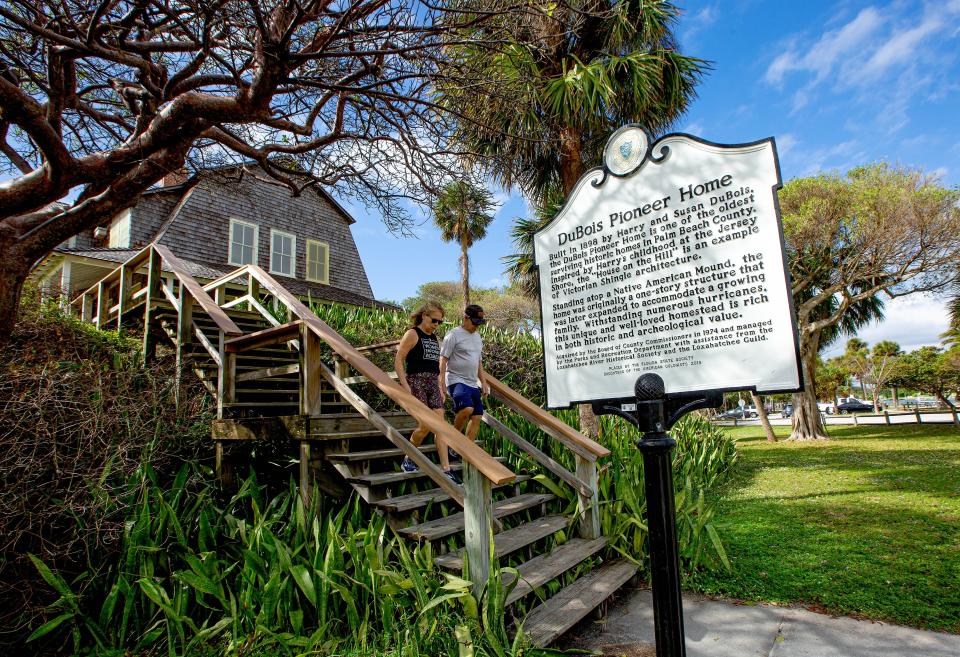
“The area was sparsely settled. It was a small farming community. At the turn of the century when the house was built, Jupiter had 100 people. Palm Beach County was not a county. It was Dade County from Stuart to the Upper Florida Keys,” Liller said.
“The mound it sits on was originally 600 feet long, and if the house had not been sitting on part of it, they would not have left the 100 feet they did,” Liller said. “The house ended up preserving part of the mound.”
After Harry DuBois moved closer to the water, he had trouble growing pineapples in the salt air, and switched to bananas, which he sold to the hotels on Palm Beach island, Liller said.
His other main pursuit was beekeeping. He was the first serious beekeeper in Southeast Florida, and he shipped thousands of pounds of honey north.
Fishing was another source of food and livelihood as the waterways were filled with fish and other seafood. Pioneers also salvaged items from shipwrecks.
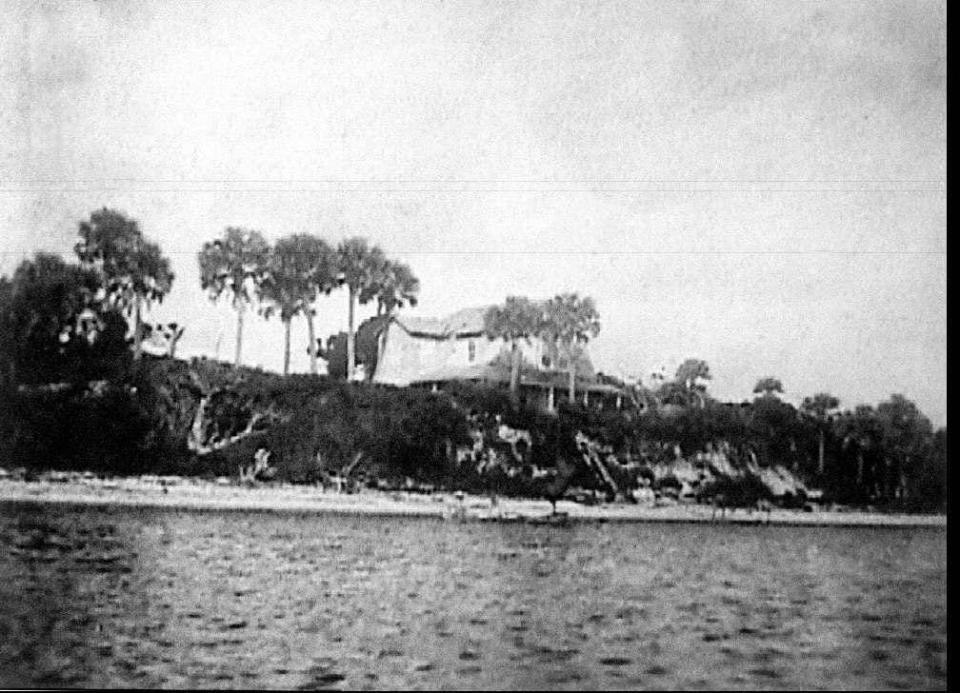
Food was stored in a cabinet called a pie safe. To deter insects, the cabinet’s legs were placed in shallow dishes with kerosene in them.
When the house was built, the water came all the way to the stairs leading up to the house.
“The Inlet came out at the south end of Jupiter Beach Park, then it was moved to where it is now in the 1920s,” Liller said.
“Things could come in on the railroad. They had the Sears catalog, but there was no overnight delivery then,” Liller said.
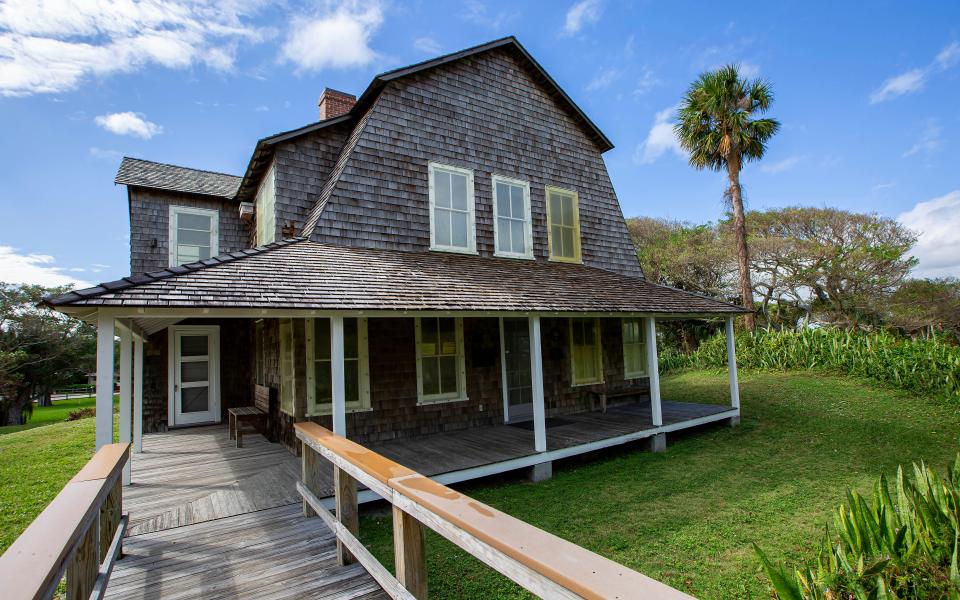
The family collected rainwater in cisterns and had no electricity until 1919, allowing them to eliminate oil-burning lamps.
“Kerosene lamps were a huge fire safety risk,” Liller said. “They were fortunate they never had any mishaps. A lot of other people did. Other older homes are gone because a pioneer knocked over a lamp.
“I would love to travel back in time and meet some of those people, but I would not want to stay too long,” Liller said.
This article originally appeared on Palm Beach Post: Jupiter's DuBois Pioneer House marks 125th anniversary

